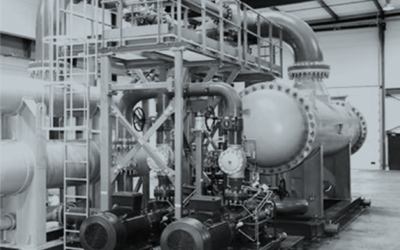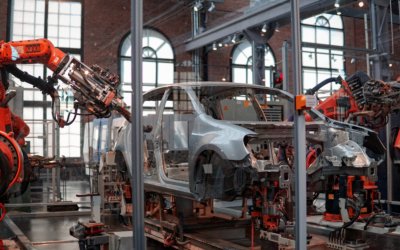Digital & Operational Transformation
Innovation & Offer PortfolioInnovation is essential. It is one of the priorities for companies. A strong innovation strategy, combined with a robust organization, gives a competitive advantage and strong profitability prospects. The successes of Tesla, BioNTech, Believe, Mirakl are evidence of strong innovation, sometimes offbeat, but creating value.
How do you achieve this in an increasingly competitive world? It’s not easy. It requires continuous mobilization of research and development capabilities to drive innovation and agile processes to move quickly from idea to market.
Pagamon helps organizations achieve operational excellence in their development and innovation projects, implementing proven practices to drive creativity. And to develop portfolios of product and service offerings aligned with the expectations of their markets, both B2B and B2C.
Challenges
A strong innovation policy and an agile development cycle that is as short as possible are essential but not sufficient prerequisites. They must be supported by a flexible internal organization to take into account customer insights at different design milestones to achieve a coherent product and service offering.
Customer insights are not only for consumer-oriented organizations. So how do you integrate insights, customer data, consumer behaviors, and market expectations and disseminate them throughout the enterprise, specifically in the innovation phase?
Although organizations are competing with each other in terms of ingenuity to optimize their performance, when it comes to innovation, they have not yet found the ideal solution: their ability to free themselves from internal resistance and the cumbersome nature of their operating methods and processes in order to “generate” breakthroughs has yet to be proven, and attempts to integrate external innovations – equity investments, partnerships, open innovation – have not necessarily been more successful to date.
To resist and succeed in this context, companies must question their organization, their processes and their culture, which are sometimes too rigid, while putting user satisfaction at the heart of their strategy: who will be the customers of tomorrow? What will their uses be? How can we provide them with an offer that is both differentiating and competitive? The stakes are high because, today more than ever, the winner takes all…
The offer must be designed to meet an ambition, a mission or even a commitment of the brand to its customers or to society. Innovation must be placed at the service of these objectives, which are then the result of a well thought-out and organized strategy in order to
- Improve the brand’s positioning.
- Optimize or build a coherent portfolio of products and services.
- Rethink products, services or experiences.
- Market new products, services or experiences.
At Pagamon, we are convinced of the need to :
- Drive innovation projects through knowledge, not resources.
- Put the voice of the customer at the center of the organization and of innovation and development projects.
- Break down silos and mobilize the entire company in innovation activities: as the probability of success of innovation projects is relatively low, they must involve and communicate with all functions in order to maximize the understanding of needs, the ability to generate new ideas and the anticipation of risks.
- Constantly adapt to the context and promote test & learn: as the development cycle of products and services is often long, the R&D, Innovation, Marketing, Sales and Services teams must communicate regularly to be able to integrate, at the right level of risk, the new constraints and opportunities that appear during development.
- Freeze the development level on a regular basis: sharing and freezing technical and functional choices at each milestone makes the development process more robust.
- Anticipate risks: it is necessary to assess the “benefits/risks” ratio for all innovations in the portfolio very early on and to regularly update it, and to know how to stop a project when this ratio becomes unfavorable.
- Leverage customer knowledge to better serve experience-based consumer spaces, structure a product offering or consolidate a brand’s positioning.
- Use a customer demand-centric approach to develop the right value for the product and service portfolio, while respecting the brand’s values and desired target positioning.
Our experience in managing both upstream (innovation and development) and downstream (product and brand strategy, service policy) cycles enables us to support industrial, R&D, marketing, sales and service departments, and to help you align your processes and your organization with customer expectations and a constantly changing competitive environment.

This project was emblematic…
… by its speed, which shows once again the dynamism generated by Agile methods,
… by the spirit of cohesion that it created between us, in the service of customer satisfaction and engineering performance,
… by the quantity of concrete proposals that were formulated.
Approach
Innovation
- Innovation strategy | Stimulating innovation | Intrapreneurship spin-off
- Continuous innovation process | Innovation organization
- Incremental, major, disruptive innovation Funnel | Qualification methodology | Design Thinking
- Value measurement
- Innovation acquisition and due diligence
- Innovation plan design
Development Cycle
- Structuring the development approach: milestones (from functional to technical design of complex systems)
- Project governance | Multi-trade | Multi-cultural
- Coaching in Agile mode: team coaching, iterations, rituals, artifacts I Product Owner, Scrum Master I Product backlog
Product | Brand strategy
- Brand or product ambition | Values
- Business plan | Product plan (per unit | per range)
- Design | Development of the product offer: architecture, innovation, segmentation (offer | customer | channel)
- Launch | deployment | relaunch strategy: market, distribution channel, geographic area
- Communication plan | Storytelling
- Repositioning audit
- Pricing approach | Pricing policy
Service Policy
- Service strategy | Positioning ‘service universe’
- Competitive analysis | Kano modeling
- Portfolio design | Structuring of service packages
- Graduated pricing policy (segment | country | terms)
- Declination on the distribution channels | Service charter
- Declination of the service portfolio
Excerpt from our references
Automotive
Aeronautics
Creation of a block diagram of the Laboratory Test Means for an aircraft manufacturer
Luxury & Cosmetics
SUPPORT FOR TWO LUXURY PERFUME BRANDS IN THE FORMALIZATION OF THEIR THREE-YEAR STRATEGIC VISION
Retail
Points of view
Towards a sustainable fashion industry: between greenwashing and real commitment
The “sustainable” initiatives of fashion brands throughout the life cycle of the garment.
Industry in the age of agility
"People need meaning and structures need agility" (Benoît Gaudron and Patrice Coumont - CGR)The Covid-19 crisis was a revelation of French deindustrialization and the catalyst for a national awareness of the importance of a strong industry. At Pagamon, we believe that...
Building a coronavirus vaccine portfolio: which governments made the right move?
Analysis and comparison of a panel of vaccine portfolios. In the current pandemic context, where an unprecedented mass of information is circulating in the media, it seemed relevant to analyze the composition of vaccine portfolios built by different countries...
The ORC systems : a mature and reliable technology for the energy and economic efficiency of gas or diesel powerplants
Focus on applications for gas and diesel power plants. According to the International Energy Agency, energy efficiency represents the main lever for reducing current CO2 emissions, with 44% of the total potential This study focuses on one of these energy efficiency...
Food consumption: responsible trends in the face of the Covid-19 crisis
How are these expectations evolving and how are they taken into account by the players in the sector? At the end of 2019, 60% of French people said they had changed their purchasing or eating habits over the past 3 yearsThe motivations and triggers were often varied...
The automotive industry and MaaS in France
Transform to better meet consumer expectations and take advantage of the mobility of tomorrow.The new vehicle market: a challenge for carmakers In 2017, 48% of new vehicles were sold to individuals, 22% to businesses, 18% to dealers and 12% to rental companies. Direct...
How to set up an engineering design process?
Having a clear and shared approach is essential at the beginning of the pre-project phase.How to strengthen the engineering design process right from the pre-project phase? How to integrate the good practices regarding the development from the upstream phase of the...
New emissions regulations and standards influence automakers’ strategy
Since 2017, the automotive industry faces new challenges to meet current environmental constraints. Changes in approval procedures, tightening of CAFE regulations and incentives for the development of electric vehicles are some of the factors that are currently influencing the short, medium and long-term strategy of automakers, forcing them to adapt quickly to a new way of conceiving mobility.
The factory of the future is autonomous… but driven by the customer and his expectations
The concept of the factory of the future has taken shape with the Industry 4.0 programs born in industrialized countries (Japan, United States, European Union...). The aim is to restore the image of the industry so that it creates more value, where its weight in the...
After-sales market: find new sources of growth based on a differentiated and accessible offering
After the warranty period, the majority of drivers are no longer going to manufacturer service points to perform vehicle maintenance: manufacturers find that the penetration of their after-sales network on their own fleet – 60% average – falls below 50% for vehicles...
Foster the emergence of innovation through a structured, transverse and sustainable approach
More and more companies are approaching innovation through dedicated processes, with a full functional dimension. Innovation cells are set up – often with success – and bring a creative dimension to the culture of these companies. Nevertheless, innovation is often...
Learn more















